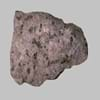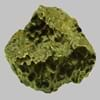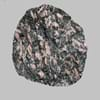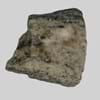Definition
Adamellite is a coarse-grained porphyritic igneous rock, a variety of Monzogranite and dominated by phenocrysts of orthoclase in a granular groundmass of perthite, plagioclase and quartz
A ganister is a hard, fine-grained quartzose sandstone or orthoquartzite which is basically used in the manufacture of silica brick typically used to line furnaces and is a type of sedimentary rocks.
Discoverer
Unknown
Unknown
Etymology
From German adamellit and from Monte Adamello, a mountain in Italy, its locality
From gan′is-ter i.e a hard, close-grained siliceous stone, often forming the stratum which underlies a coal-seam
Class
Igneous Rocks
Sedimentary Rocks
Sub-Class
Durable Rock, Hard Rock
Durable Rock, Hard Rock
Group
Plutonic
Not Applicable
Other Categories
Coarse Grained Rock, Opaque Rock
Coarse Grained Rock, Fine Grained Rock, Opaque Rock
Texture
Porphyritic
Clastic, Granular, Rough
Color
Black, Grey, Orange, Pink, White
Beige, Black, Brown, Colourless, Cream, Dark Brown, Green, Grey, Light Green, Light to Dark Grey, Pink, Red, White, Yellow
Durability
Durable
Durable
Scratch Resistant
Yes
Yes
Appearance
Veined or Pebbled
Rough
Interior Uses
Bathrooms, Countertops, Decorative Aggregates, Entryways, Floor Tiles, Homes, Hotels, Kitchens, Stair Treads
Decorative Aggregates, Entryways, Flooring, Homes, Interior Decoration
Exterior Uses
As Building Stone, As Facing Stone, Bridges, Paving Stone, Near Swimming Pools, Office Buildings, Resorts
As Building Stone, Garden Decoration, Office Buildings, Paving Stone
Other Architectural Uses
Curbing
Curbing
Construction Industry
As Dimension Stone
Cement Manufacture, Construction Aggregate, for Road Aggregate, Production of Glass and Ceramics, Raw material for the manufacture of mortar
Medical Industry
Not Yet Used
Not Yet Used
Antiquity Uses
Artifacts, Monuments, Sculpture, Small Figurines
Artifacts, Monuments, Sculpture, Small Figurines
Commercial Uses
Curling, Gemstone, Laboratory bench tops, Tombstones
An Oil and Gas Reservoir, In aquifers, Petroleum reservoirs, Soil Conditioner, Source of Magnesia (MgO), Tombstones
Types
Not Available
Not Available
Features
Available in Lots of Colors and Patterns, It is One of the Oldest, Strongest and Hardest Rock
Available in Lots of Colors and Patterns, Generally rough to touch, Very fine grained rock
Archaeological Significance
Famous Monuments
Data Not Available
Data Not Available
Famous Sculptures
Data Not Available
Data Not Available
Pictographs
Not Used
Not Used
Petroglyphs
Not Used
Not Used
Formation
Adamellite is a type of Igneous rock which is formed through the cooling and solidification of lava or magma and is a variety of Monzogranite.
Ganisters are formed by the destruction of easily weathered minerals mainly feldspar, within the surface horizon of soil by soil-forming processes.
Mineral Content
Apatite, Biotite, Chlorite, Orthoclase, Perthite, Plagioclase, Quartz, Titanite, Zircon
Calcite, Clay, Clay Minerals, Feldspar, Micas, Quartz
Compound Content
Aluminium Oxide, CaO, Iron(III) Oxide, FeO, Potassium Oxide, MgO, MnO, Sodium Oxide, Phosphorus Pentoxide, Silicon Dioxide, Titanium Dioxide
Aluminium Oxide, CaO, Iron(III) Oxide, Potassium Oxide, MgO, Sodium Oxide, Silicon Dioxide
Types of Metamorphism
Burial Metamorphism, Contact Metamorphism, Hydrothermal Metamorphism, Impact Metamorphism, Regional Metamorphism
Not Applicable
Types of Weathering
Biological Weathering
Biological Weathering
Types of Erosion
Chemical Erosion, Glacier Erosion, Wind Erosion
Water Erosion, Wind Erosion
Grain Size
Coarse Grained
Coarse or Fine
Fracture
Not Available
Splintery
Porosity
Less Porous
Highly Porous
Luster
Dull to Grainy with Sporadic parts Pearly and Vitreous
Dull
Cleavage
Not Available
Perfect
Toughness
Not Available
2.6
Specific Gravity
2.6-2.7
2.2-2.8
Transparency
Opaque
Opaque
Density
2.6-2.8 g/cm3
2.2-2.8 g/cm3
Resistance
Heat Resistant, Wear Resistant
Heat Resistant, Impact Resistant, Pressure Resistant
Deposits in Eastern Continents
Asia
China, India, Iran, Saudi Arabia, Sri Lanka, Taiwan, Thailand, Turkey, Vietnam
China, India, Kazakhstan, Mongolia, Russia, Uzbekistan
Africa
Angola, Egypt, Madagascar, Namibia, Nigeria, South Africa
Namibia, Nigeria, South Africa
Europe
Austria, Belgium, Finland, France, Germany, Italy, Norway, Sardinia, Spain, Switzerland, The Czech Republic, Venezuela
Austria, Denmark, Germany, Great Britain, Netherlands, Norway, Poland, Sweden, Switzerland, United Kingdom
Others
Not Yet Found
Greenland
Deposits in Western Continents
North America
Canada, USA
Canada, USA
South America
Not Yet Found
Brazil
Deposits in Oceania Continent
Australia
Not Yet Found
New South Wales, New Zealand
All about Adamellite and Ganister Properties
Know all about Adamellite and Ganister properties here. All properties of rocks are important as they define the type of rock and its application. Adamellite belongs to Igneous Rocks while Ganister belongs to Sedimentary Rocks.Texture of Adamellite is Porphyritic whereas that of Ganister is Clastic, Granular, Rough. Adamellite appears Veined or Pebbled and Ganister appears Rough. The luster of Adamellite is dull to grainy with sporadic parts pearly and vitreous while that of Ganister is dull. Adamellite is available in black, grey, orange, pink, white colors whereas Ganister is available in beige, black, brown, colourless, cream, dark brown, green, grey, light green, light to dark grey, pink, red, white, yellow colors. The commercial uses of Adamellite are curling, gemstone, laboratory bench tops, tombstones and that of Ganister are an oil and gas reservoir, in aquifers, petroleum reservoirs, soil conditioner, source of magnesia (mgo), tombstones.









